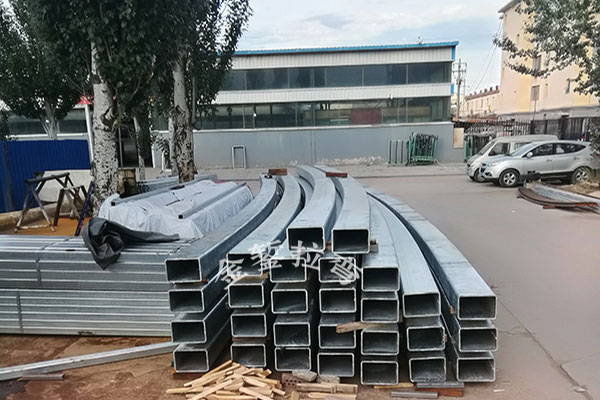Redefining the construction industry with innovative solutions, cuttin-edge technology and sustainable practices
Profile Bending 2025-06-25
Bending doors and windows is a crucial manufacturing process in the construction and architectural industries, allowing for the creation of aesthetically pleasing and structurally sound products. This process involves the manipulation of various materials, primarily aluminum and PVC, to achieve desired shapes and sizes. In this article, we will delve into the processing procedure for bending doors and windows, as well as highlight the essential technical points that ensure high-quality results.
Processing Procedure
1. Material Selection
The first step in the bending process is selecting the appropriate material. Common materials used in door and window fabrication include:
-Aluminum: Lightweight, durable, and resistant to corrosion, aluminum is a popular choice for modern doors and windows.
-PVC (Polyvinyl Chloride): Known for its insulation properties and low maintenance, PVC is often used in residential applications.
-Steel: While heavier, steel provides increased strength and security, making it suitable for commercial applications.
2. Preparation
Once the material is selected, it is cut to the required dimensions using precision cutting tools. This stage may involve:
-Measuring: Accurate measurements are critical to ensure that the final product fits correctly within the intended space.
-Marking: Clear markings on the material help guide the bending process.
3. Bending Process
The bending of doors and windows typically involves several techniques, depending on the material and desired curvature:
-Roll Bending: In this method, the material is passed through a series of rollers to achieve gradual bends. This technique is ideal for creating curves and arches.
-Press Brake Bending: A press brake machine uses a punch and die system to bend the material at specific angles. This method is suitable for sharp angles and precise bends.
-Heat Bending: For thermoplastic materials like PVC, heat is applied to soften the material before bending. This technique allows for more complex shapes without risking material damage.
4. Cooling and Stabilization
After bending, materials must be allowed to cool and stabilize. This helps prevent warping and ensures that the finished product retains its shape. For heat-bent materials, this process may involve using jigs or molds to maintain the desired configuration during cooling.
5. Finishing Touches
Once the bending process is complete, additional finishing touches may be necessary:
-Surface Treatment: Depending on the material, surface treatments such as anodizing, powder coating, or painting may be applied to enhancethe aesthetic appeal and protect against environmental factors.
-Assembly: After surface treatment, components may be assembled. This may include attaching frames, adding glazing, or installing hardware like hinges and locks.
-Quality Control: A thorough inspection should be conducted to ensure that all dimensions meet specifications, and that the product is structurally sound and visually appealing. Any defects should be addressed before final delivery.
Technical Points
1. Equipment Calibration
Proper calibration of bending machines is essential for achieving precise bends. Operators must regularly check and calibrate machines to ensure accuracy. This involves adjusting settings for pressure, speed, and angle to suit the specific material and design requirements.
2. Material Properties
Understanding the properties of the material being used is crucial. Different materials respond differently to bending techniques. For example, aluminum tends to have a memory effect, which can cause it to revert slightly after bending. Knowledge of the material's yield strength and ductility will guide the operator in selecting the appropriate bending method and parameters.
3. Bend Radius Considerations
The radius of the bend is a critical factor that influences both the aesthetics and structural integrity of the final product. A bend that is too tight can lead to cracking or deformation. Manufacturers typically follow specific guidelines for minimum bend radii based on material thickness and type.

4. Heat Application Techniques
When using heat bending, controlling the temperature is vital. Too much heat can weaken the material, while too little may not provide sufficient flexibility for bending. Operators should utilize thermal sensors and monitors to ensure consistent heating.
5. Safety Measures
Safety is paramount in any manufacturing process. Operators should be trained in safe handling practices for machinery and materials. Personal protective equipment (PPE) such as gloves, goggles, and hearing protection should be worn to prevent injuries.
6. Environmental Considerations
Sustainability is becoming increasingly important in manufacturing. Operators should consider using eco-friendly materials and methods, such as recycling scrap material from the bending process. Additionally, energy-efficient machines can reduce the environmental impact of manufacturing operations.
The bending of doors and windows is a sophisticated process that requires careful attention to detail and technical expertise. From material selection to the final finishing touches, each step in the process contributes to the overall quality and functionality of the product. By understanding the essential technical points and adhering to best practices, manufacturers can produce doors and windows that meet both aesthetic and structural standards. As technology continues to evolve, ongoing training and adaptation to new techniques will be crucial for staying competitive inthe ever-evolving market.